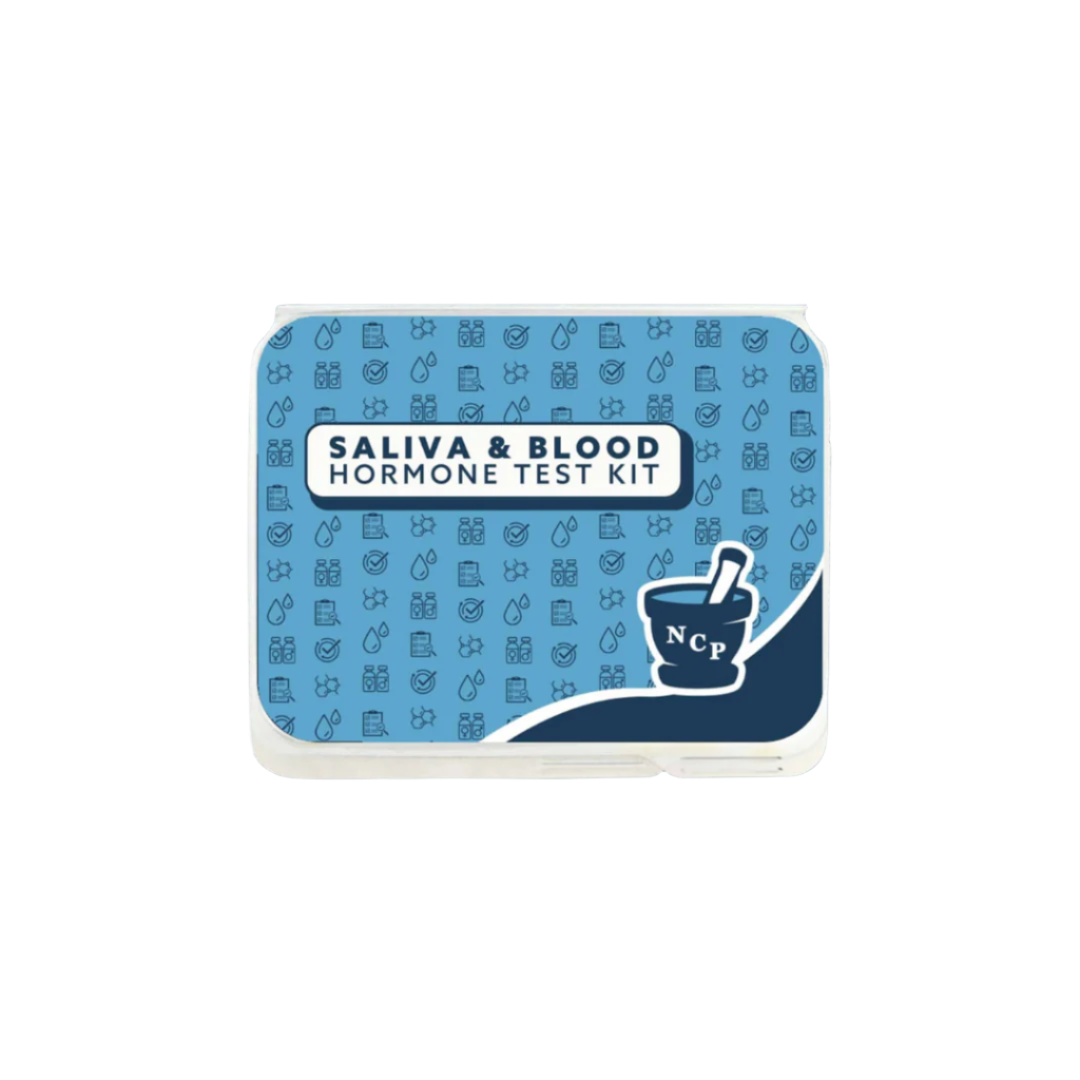-
- Shop
- Categories
- Health Needs
Item added to your cart


RESULTS COME WITH DETAILED INSIGHTS & SUGGESTIONS!
Symptoms common to hormonal imbalances in the endocrine systems are seen as the body struggles to maintain balance, but does not succeed. Without an overall picture of which hormone systems are affected, it is often difficult to know the best clinical course of action for correcting the imbalance.
Saliva is an excellent way to assess sex and adrenal hormone levels in women, and we find a good correlation with symptoms. However, in individuals who produce very little saliva, saliva collection may not be possible and in those who use hormones in a sublingual or troche supplement, saliva hormone testing is not appropriate and blood testing is a better choice.
SALIVA OR BLOOD SPOT?
Near-identical results are found from conventional blood serum (venipuncture) testing and finger-stick capillary blood spot testing. This makes blood spot testing a convenient alternative to serum testing for endogenous hormone evaluations, so the choice between blood spot and serum in our profiles is a matter of provider preference. However, when testing hormones in women using hormone supplementation, serum and blood spot are only equivalent in women using oral, sublingual, pellet or patch delivery, while blood spot testing is superior to conventional venipuncture serum testing when hormones are delivered as a topical cream or gel, or a troche. When individuals use hormones that are absorbed topically (through the skin) or absorbed through mucous membranes (troches, sublingual drops, vaginally), blood serum levels show very little increase. In striking contrast, salivary and blood spot levels of these sex steroids increase, demonstrating that the hormones have entered tissues of the body. Why? Hormones measured from saliva or capillary blood represent the free or bioavailable fraction of sex steroids in blood that travel to the tissues. In contrast, venous blood on its way back to the heart, is depleted of its bioavailable hormones and more representative of the amount of hormone that was not delivered to the tissues.
Estradiol and progesterone levels and their ratio are an index of estrogen/progesterone balance. An excess of estradiol, relative to progesterone, can explain many symptoms in reproductive age women including endometrial hyperplasia,
pre-menstrual syndrome, fibrocystic breasts, and uterine fibroids. In older women using estrogen supplements alone, a deficiency in progesterone can also result in symptoms of estrogen dominance, which include weight gain in the hips and thighs, fibrocystic and tender breasts, uterine fibroids, irritability, water retention, and thyroid problems. These symptoms are also seen in some women approaching menopause, whose estrogen levels swing wildly from high to low without the balancing effects of progesterone. If estrogen dominance is not corrected, it can lead to cancers of the uterus and breasts, and insulin resistance.
With the onset of menopause, when ovarian estrogen and progesterone production declines, a new subset of symptoms can result from low estradiol levels, including hot flashes, night sweats, vaginal dryness, sleep disturbances, foggy thinking, more rapid skin aging, and bone loss. Maintaining appropriate levels of estradiol, adequately balanced with progesterone, at any age is essential for optimal health.
Testosterone levels can also be either too high or too low. Testosterone in excess, often caused by ovarian cysts, leads to conditions such as excessive facial and body hair, acne,
and oily skin and hair. Polycystic ovarian syndrome (PCOS) is thought to be caused, in part, by insulin resistance. On the other hand, too little testosterone is often caused by excessive stress, medications, contraceptives, and surgical removal of the ovaries. This leads to symptoms of androgen deficiency including loss of libido, thinning skin, vaginal dryness, loss of bone and muscle mass, depression, and memory lapses. SHBG is a protein produced by the liver in response to exposure to any type of estrogen, whether produced naturally by the body, consumed as a synthetic oral contraceptive estrogen, estrogen therapy, or as foods or herbs (phytoestrogens). Released from the liver into the bloodstream, SHBG binds tightly to circulating estradiol and testosterone, preventing their rapid metabolism and clearance and limiting their bioavailability to tissues. SHBG gives a good index of the extent of the body’s overall exposure to estrogens. The SHBG level is also used to calculate free (unbound) testosterone levels when blood spot or serum are used instead of saliva to measure sex hormones.
DHEA, mostly found in the circulation in its conjugated form, DHEA sulfate (DHEA-S), is a hormone produced by the adrenal glands, and levels generally reflect adrenal gland function. It is a precursor for the production of estrogens and testosterone, and is therefore normally present in greater quantities than all the other steroid hormones. Its production is highest in the late teens to early 20s, and declines gradually with age. Like cortisol, it is involved with immune function and a balance between the two is essential. Low DHEA can result in reduced libido and general malaise, while high DHEA can have masculinizing effects on women because it metabolizes to androgens, including testosterone. Because of its conversion to estrogens and androgens, it is important to monitor levels of these hormones, as well as levels of DHEA, during supplementation.
Cortisol is an indicator of adrenal function and exposure to stressors. Under normal circumstances, adrenal cortisol production shows a diurnal variation and is highest early in the morning, soon after waking, falling to lower levels in the evening. Normal cortisol production shows a healthy ability to respond to stress. Low cortisol levels can indicate adrenal fatigue (a reduced ability to respond to stressors), and can leave the body more vulnerable to poor blood sugar regulation and immune system dysfunction. Chronically high cortisol is a consequence of high, constant exposure to stressors, and this has serious implications for long-term health, including an increased risk of cancer, osteoporosis, and possibly Alzheimer’s disease.
Free T4, free T3, TSH, and TPOab tests can indicate the presence of an imbalance in thyroid function, which can cause a wide variety of symptoms, including feeling cold all the time, low stamina, fatigue (particularly in the evening), depression, low sex drive, weight gain, and high cholesterol.
Turnaround Time: 7 days